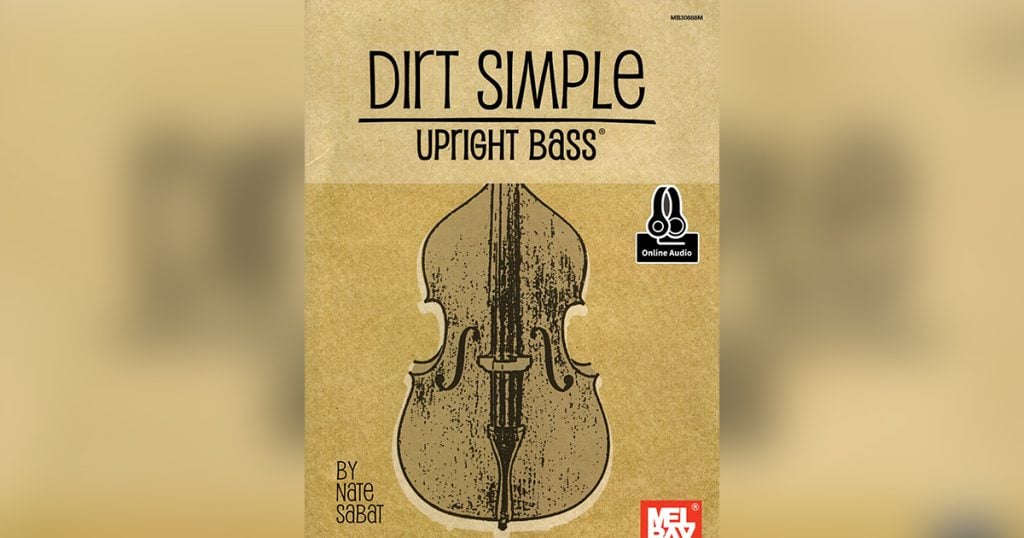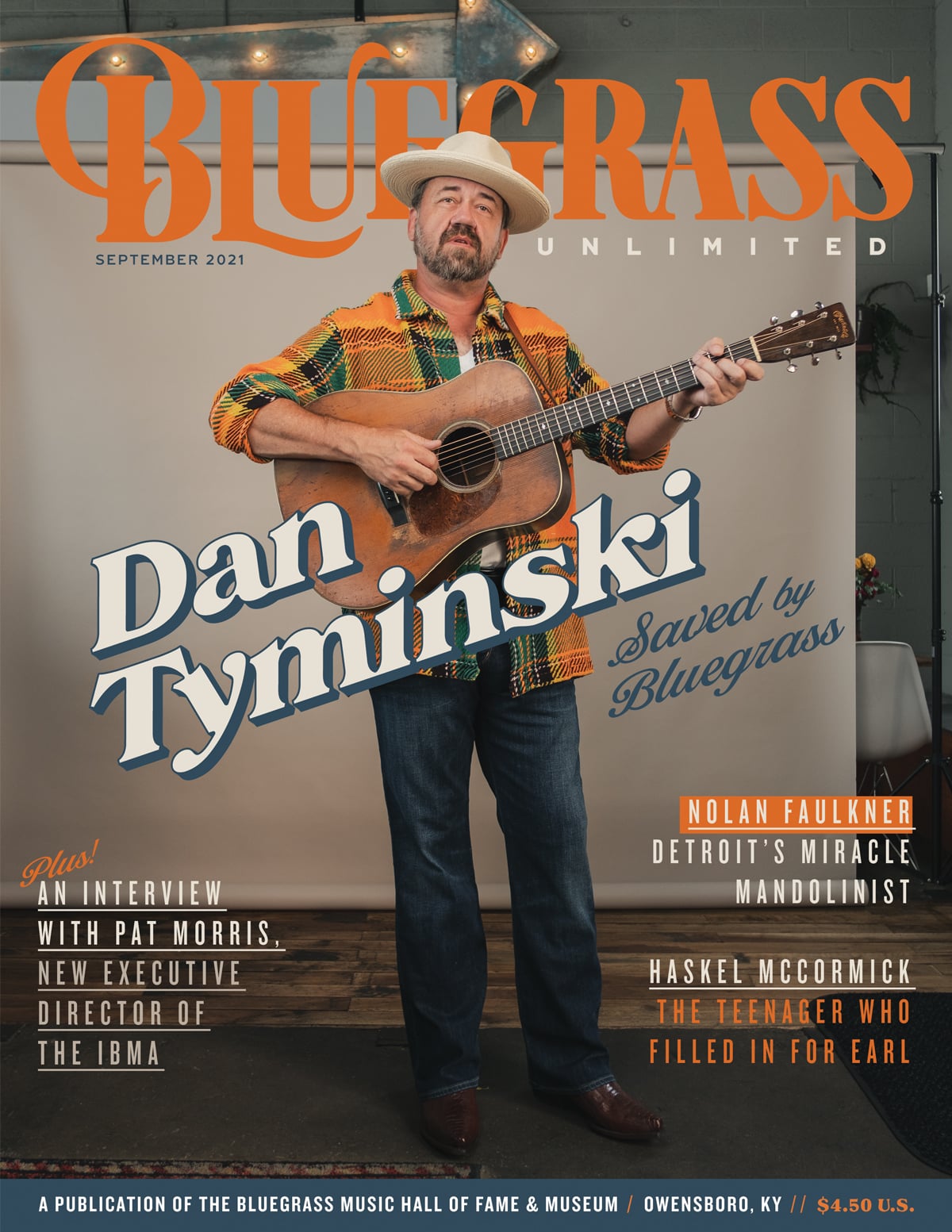Dirt Simple Upright Bass
Mel Bay Publications
There are relatively few books on the market today that teach you how to play the upright bass in the context of bluegrass music, so Nate Sabat’s new book Dirt Simple Upright Bass is a very welcome addition to the world of bluegrass instructional material.
In this 46-page book, which also includes 50 downloadable audio tracks, the author necessarily starts with the basics…reading bass notation, body and hand positioning, and major scales and triads in standard bluegrass keys.
After the basics are out of the way, Sabat then presents several examples of how to build a groove in bluegrass. The next section—Bassline Construction—starts to develop the material that will be of the greatest value to a beginning bluegrass bass player who is looking to take their playing to the next level. Here Sabat—using the tune “Going Down The Road” as his example—presents three different bass lines (using different approach notes to chord changes), three different turnarounds, and expresses two different “fillable moments.” This section provides a wonderful study for bass players who are looking to break out of simply rocking the 1—5 pattern over each chord.
Using the techniques that are explained in the section on bassline construction, the next section—Composed Baselines—presents basslines for the first verse and chorus of five common bluegrass tunes, namely “Rabbit in the Log” in the key of F, “Don’t This Road Look Rough and Rocky” in the key of A, “Long Journey Home” in the key of B, “I Am a Pilgrim,” in the key of G, and “Angel Band” in the key of C.
In each example, Sabat expresses “a healthy mix of the available approaches” so that the student will have many examples to work with. There are four different arrangements presented for each tune. I like the fact that all of the tunes are presented in a different key, that there is a song in ¾ time included, and that there are both fast songs and slow songs in the mix.
The audio tracks that present each tune include a guitar and vocal along with the bass. Also included with the audio track examples are a track of each tune played with just the voice and guitar so that you will have a practice track to work with.
I feel that the author—a founding member of the bluegrass band Mile Twelve who studied bass at the Berklee College of Music—has done a great job providing an easy-to-follow book that is a much-needed addition to the library of the beginning-to-intermediate level bluegrass bass player. This book is highly recommended.

